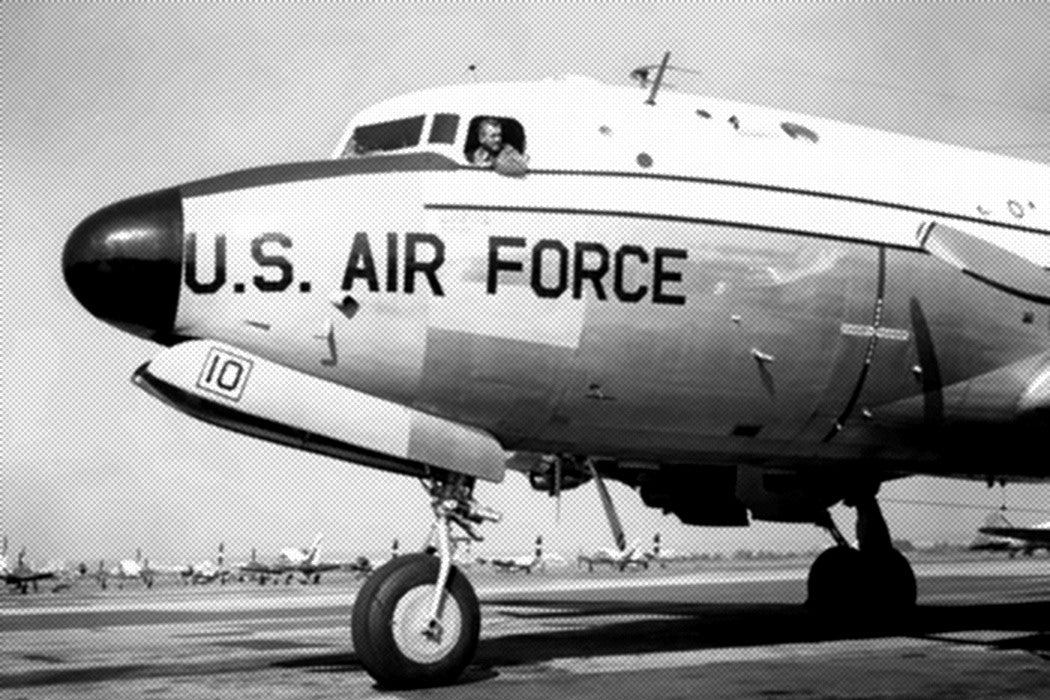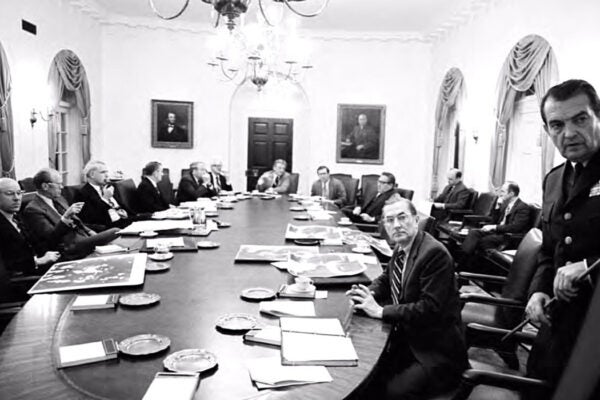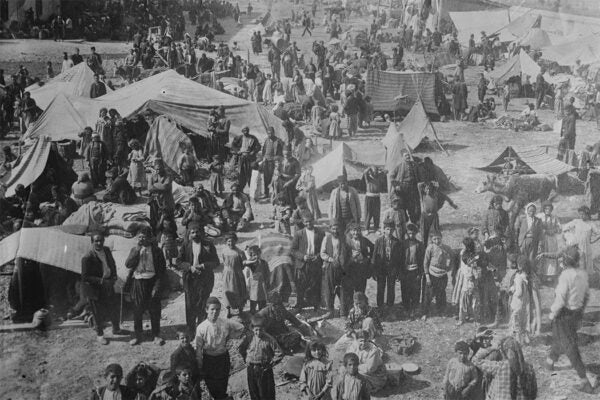Since the end of the Cold War, it has been an unspoken truth that the United States has established a type of imperial power over the Earth. Its military outspends the next ten highest-spending militaries put together. It operates 19 of the world’s 36 aircraft carriers. As such, it is the only military that can project force anywhere in the world, and it has structured its commands into global zones to reflect that fact.
But how did a country that has prided itself as a symbol of freedom, and for a very long time resisted close involvement with world politics, end up with this power? It took both careful organization and canny public relations with the U.S. public and the world.
An important step towards both of those goals occurred in the passage of the 1947 National Security Act, which turns 70 today, July 26. After massive spending to win World War II, the public was tired of constant war-readiness and the high taxes that accompanied it. At the same time, President Truman and his advisers were gravely concerned about the expansion of communism and of the chance of military conflict with the Soviet Union.
Intending to rein in spending, the National Security Act reorganized the military establishment, putting what had been separate the military services of the Army, Navy, and Marines under the administration of a unified, civilian Secretary of Defense. Initially called the “National Military Establishment,” Congress renamed it the more euphemistic “Department of Defense” in 1949. It also created the National Security Council and the Central Intelligence Agency.
But as Arlene Lazarowitz argues, the big winner of this reorganization was the U.S. Air Force, which was made independent of the Army from its prior incarnation as the Army Air Corps. Although the National Security Act was designed to reduce the traditional competition between the military services, with the large overall budgetary reduction in the late 1940s, their advocates took their cases for resources directly to Congress—and to the public.
Encouraging fears of the “Red Menace” early in the Cold War, the Air Force made the argument that only dominant air power could prevent the outbreak of another world conflict. It leveraged the public’s fascination with air power an exaggerated perceptions of its contribution to success in World War II to win media coverage. Before the invention of ballistic missiles, bombers were the only way to deliver the United States’ still-limited nuclear arsenal. Air Force advocates also claimed long-range bombers could maintain national security without the high cost or potentially tragic losses of large land or sea forces. In a conflict with the Navy over the most efficient way to deliver those planes, the Air Force attracted the bulk positive coverage in magazines from Newsweek to Reader’s Digest. As a result, even before the USSR tested its first nuclear weapon, public opinion surveys revealed Americans preferred developing a land-based air force to other military options in the Cold War. While the outbreak of the Korean War in 1950 necessitated the renewed funding of conventional forces, it confirmed the potential threat of Russian expansion and the role air power could play in blunting it.
Today, the U.S. public is almost blithe in its acceptance of the omnipotence of American air power, now represented by our fleet of unmanned drones. This seems the logical end-development of a technological revolution that has removed the messiness of “boots on the ground” from America’s exercise of world power. However, this evolution did not occur, nor has it continued, without the continued manipulation of public opinion.







